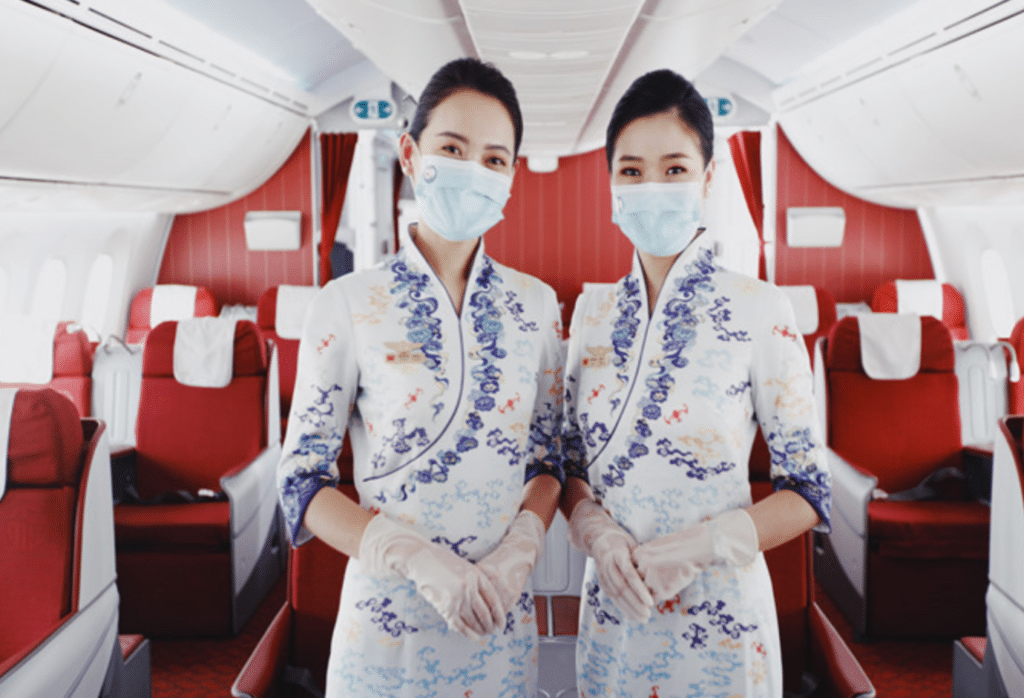Just as some airlines are working to remove conventional rules for flight attendants, others are clutching onto outdated and sexist regulations.
The latest case involves one of China’s largest airlines, Hainan Airlines, which announced this week that it would be prohibiting flight attendants from flying if their weight exceeded the “standard limit” by 10 per cent.
The new guidelines argue that the introduction of the new Body and Weight Requirements is “based on the significance of maintaining a professional image,” according to state publication, The Global Times, and that even a formula has been provided for calculating that limit based on an individual’s height.
Flight attendants who exceed this limit would be put on a company-supervised “weight reduction plan.”
One female employee told the Times she was surprised by the latest guidelines.
“If airlines deprive overweight flight attendants of the right to work normally purely because of visual aesthetic considerations, this is definitely employment discrimination,” she said. “The introduction and implementation of such regulations have no respect for flight attendants.”
Earlier this week, the airline, which has a five-star airline rating by Skytrax, confirmed to CNN the existence of a “weight reference standard”, adding that the measure “cannot be interpreted as a simple criterion to suspend a flight attendant,” but that it was created to manage the crew’s “health, physical shape and posture.”
“[The standard is] “based on the standard human body weight reference and matched with the healthy weight range measurement for the crew,” the airline announced.
“This is intended to advocate healthy living habits and maintain a good professional image and healthy physique by anchoring the reference target, rather than passively waiting for individual crew members’ physique to change significantly and then affect safety service work,” it said.
One lawyer based in China spoke to NBC News, conveying the response of most people — they said that the policy was “very inappropriate and obviously illegal in China” and may constitute employment discrimination.
“This weight standard could only be legitimised if Hainan Airlines asked for every employee’s agreement in advance with signed notifications and consent forms,” they said.
China “has long lagged behind in developing an overarching regulatory framework” that encompasses the entire industry, the lawyer added.
According to them, Hainan Airlines employees can seek legal avenues and request the company retract the guidelines, or they can seek arbitration and compensation if their employment is terminated for violating them.
“Under this condition, the employees are very likely to win the case,” the lawyer said.
Other recent rulings around airline attire and weight rules
Last month, Air New Zealand announced that it would start asking passengers to voluntarily weigh themselves with their carry-on baggage before checking in for an international flight out of Auckland.
The new program, called “International Passenger Weight Survey,” is part of a pilot program requested by New Zealand’s Civil Aviation Authority and helps the airline determine the total weight of passengers aboard a flight for research purposes.
“For safety reasons we need to know the weight of all items onboard the aircraft,” the airline announced on its website.
“The scales do not display the weight as this is fed directly into a computer and recorded anonymously along with thousands of other passengers.”
Elsewhere, in India, one airline asked its flight attendants to lose weight or they’d be transferred to an airport job.
A spokesman for Air India said back in 2015 that the request was “an opportunity for them to bring themselves back to the (required) fitness level. If they cannot because of any medical reasons, they will be offered ground duties.”
In 2019 the general manager of Pakistan International Airlines issued a memo to more than 1,500 of its flight crew, advising them to lose weight.
Thankfully, it’s not all doom and gloom — some airlines are working towards a more progressive workplace.
In 2022, Alaska Airlines, Virgin Atlantic and British Airways all launched gender-neutral uniform rules to promote greater inclusivity for its flight attendants.
The new low-cost Australian airline Bonza, which was founded in October 2021, unveiled its first uniform last year called ‘Wear It Your Way’ that allows its staff to ‘mix and match’ uniform options regardless of gender.
Bonza’s Chief Commercial Officer Carly Povey said the company didn’t want to “dictate what lipstick to wear – or whether you have to wear lipstick at all.”
“We won’t ask crew to cover up their tattoos and just because you’re female, that doesn’t mean you have to wear a skirt,” Povey said at the time.
This month, Qantas announced its new guidelines that were not gender-specific. This means that all staff, regardless of gender, can wear long hair, makeup or no makeup, and wear flats.
“The update doesn’t change our uniform but modernises the way employees wear it in line with employee feedback and evolving customer expectations,” Qantas said in a statement.
“Our uniforms are a symbol of our iconic brand and our people are very proud to wear them. Fashions change, and so have our style guidelines over the years.”
“We’re proud of our diversity and as well as bringing our guidelines up to date, these changes will make wearing our uniform more comfortable and practical for all of our people, including those with a wide range of body types and those from diverse cultural backgrounds.”
Image: Hainan Airlines


